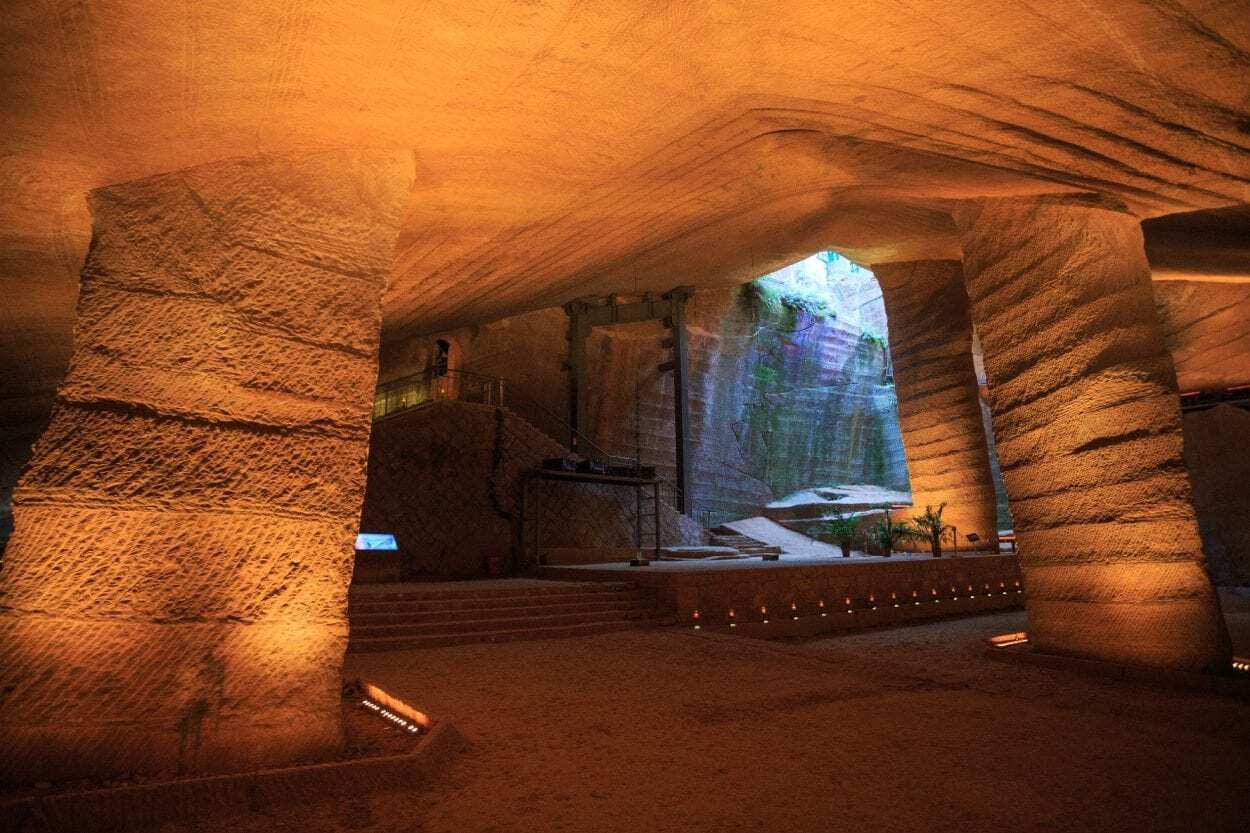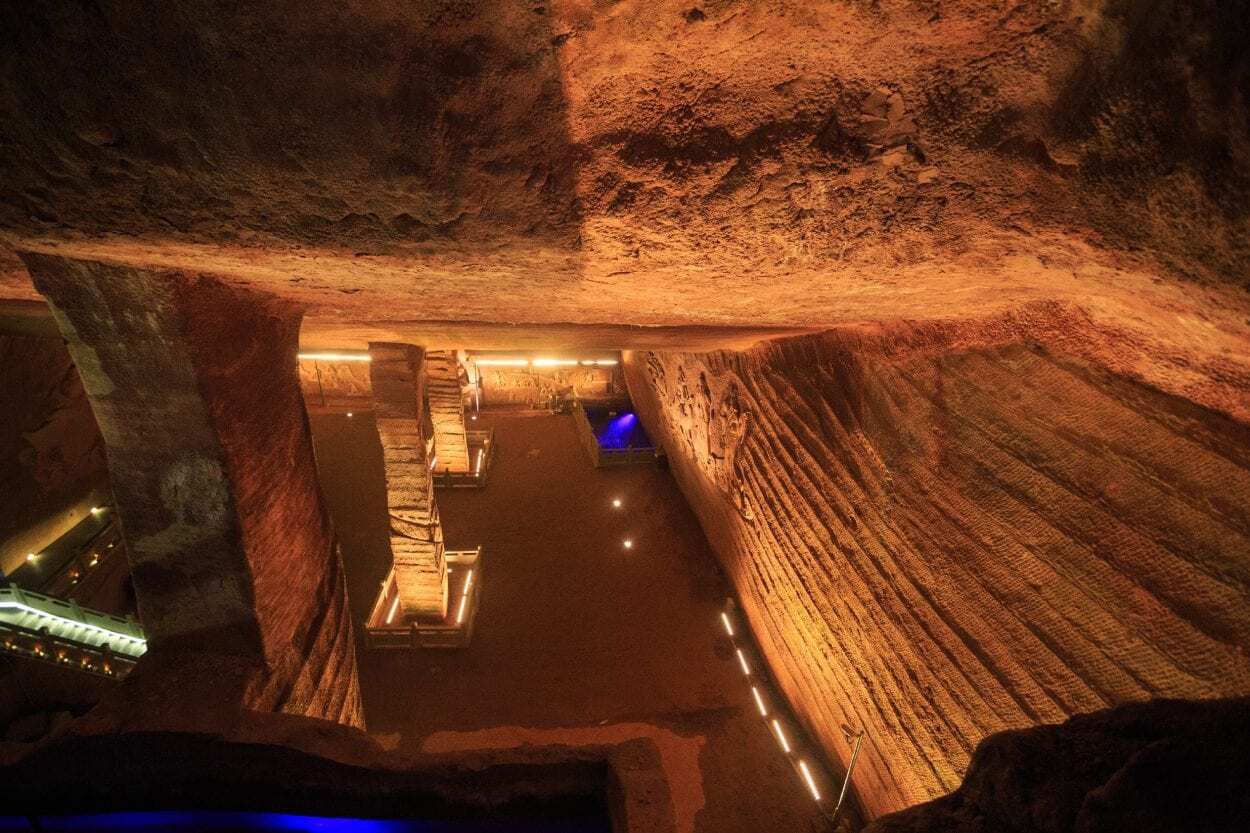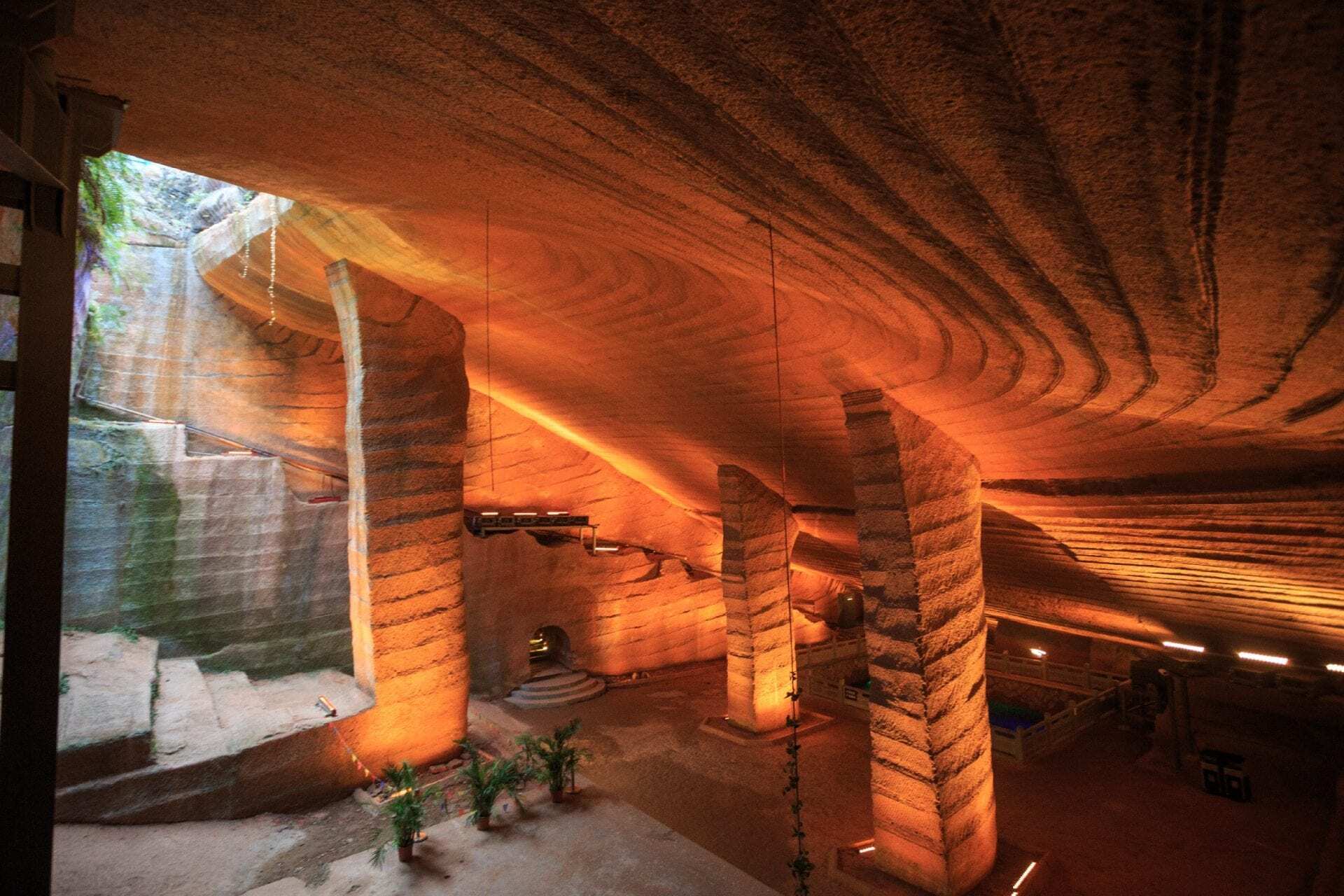Longyou Caves is a complex of 24 artificial caves, constructed into the sandstone geology of Fenghuang Hill in the Zhejiang province of China.
The caves were discovered by accident in 1992, when local farmers drained several ponds revealing five large manmade caverns and 19 smaller caves.
The five caverns, independent from each other measure between 18-34 metres, reaching heights of up to 20 metres with supporting pillars and distinctive shapes remarkably curved with shaking imprints across the cavern walls and ceilings.
After news of the discovery spread across China, it was first proposed that the caves were an obscure natural wonder, as the design and formation was completely distinct from other ancient caves, quarries, mines, or ceremonial caverns constructed in china throughout antiquity to draw a comparison.

Upon further study, it was found that each complete cavern has only one portal, associated with a vertical shaft with a carved stairwell that allows rainfall and surface runoff to enter the caverns. To manage the water intake, a system of drainage troughs, some drainage channels, and a water trap was carved into the cavern base to collect the water.
The caverns are also aligned along a south to southwest orientation, maximising the use of sunlight to illuminate the interior, with inclined sidewalls that reduces the stress on the cave ceilings preventing collapse.
It is highly possible that the cavern was formed by carving rock stones from top to bottom and layer by layer using short chisels with different sizes (based on several short chisels made from steel, discovered in one of the larger caves).

The question on who, when, and why the Longyou Caves were created has been an ongoing investigation by archaeologists and academics since their first initial discovery.
Few historical records or dateable evidence has been found to answer any of these questions, with only a Chinese poem by Yu Xun, written in the 17th century giving some documented provenance.
Archaeologists have recovered glazed clay pots in the silt soils of the cavern floor, dated to the Western Han Dynasty from 206 BC to AD 23, which suggests the caves were constructed earlier and date from around 2,000 years ago.
Why they were constructed has also led to speculation that they were ancient quarries, a mausoleum, underground storage, Taoist dwellings, reservoirs, secluded military encampments, a palace, or a ceremonial site for making offerings to the gods and ancestors.
Each theory has a reasonable argument, however, the scarcity of evidence can neither be supported nor disproved, until further research may shed light on the mystery of the Longyou Caves.
Header Image Credit : Zhangzhugang – CC BY-SA 3.0





